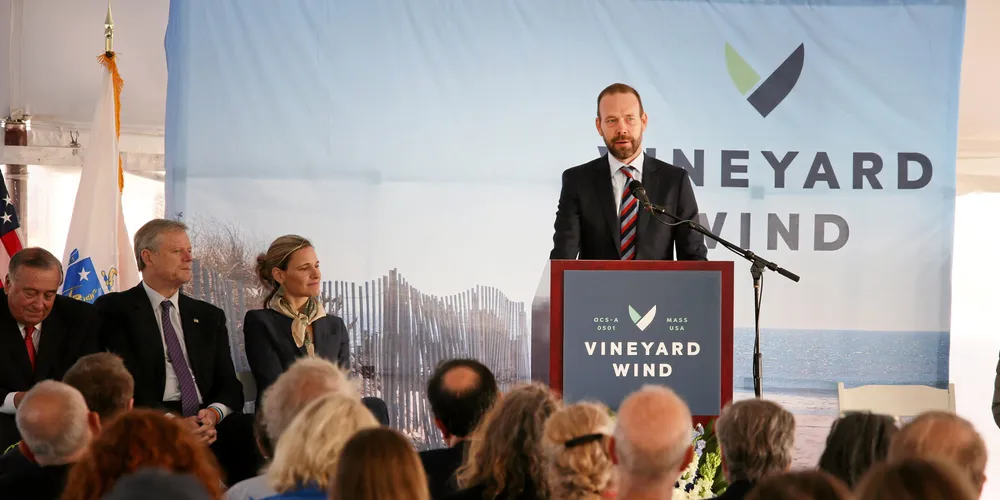'Battle scars and lessons learned' will guide freshly minted Vineyard Offshore in US: Pedersen
With 50% stake in Vineyard Wind 1, existing acreage, and new lease in New York Bight, fledgling venture has 4GW of potential capacity to bring to burgeoning sector, says CEO

Pedersen said the industry then thought the US would be good for 400-800MW of total capacity. “Nobody could have seen how fast the market would grow.”
“Once we had Vineyard Wind over the finish line, the strategic rationale of joining up and also the alignment of the two shareholders didn’t they really necessitate that we were in the same company,” he said.
Following their divestiture, “we went straight into... the New York Bight auction”, Pedersen noted.
CIP, bidding as Mid-Atlantic Offshore, emerged as a winner in the record-setting $4.37bn auction, taking control of the 43,000-acre lease 0544 for $285m.
“Because we had quite a lot of capacity in the 0522 area, [0544] fit well with our strategy. [Lease] 0544 was the smallest project in the New York Bight but for us it took the portfolio from 2.5GW to 4GW,” he said. “We feel that we can create synergies across these two areas. With the addition of the 0544, this company can play in the power markets from New Jersey to Massachusetts.”
Pedersen says the struggle to develop Vineyard Wind earned his team “lessons learned, or battle scars”, that will guide the new outfit forward as they transform virgin acreage into operating capacity.
As the first project to make its way through the entire permitting process and reach construction, Vineyard Wind 1 stood as proxy not for a project, but for the entire industry, and to this day the spotlight remains on the project’s every move.
“We didn’t fully appreciate how [Vineyard Wind 1] would be seen as not only a project, but the first of many projects, and therefore how many of discussions that were not necessarily on the project itself but on the industry at large,” he said.
“When we look back, if we had known then what we know now, we may have approached some issues little bit differently just knowing that it would become such a big industry so quickly.”
“Most importantly that we can deliver on the projects so that we actually get the power to the ratepayers but that we also get the local US supply chain up and running, that is a clear goal from both the states and the federal government,” said Pedersen.
“So while they want to see the clean affordable power they also want to see the jobs and that is a joint challenge. Its not the easiest of times right now but I’m sure we will find a way through it.”
(Copyright)